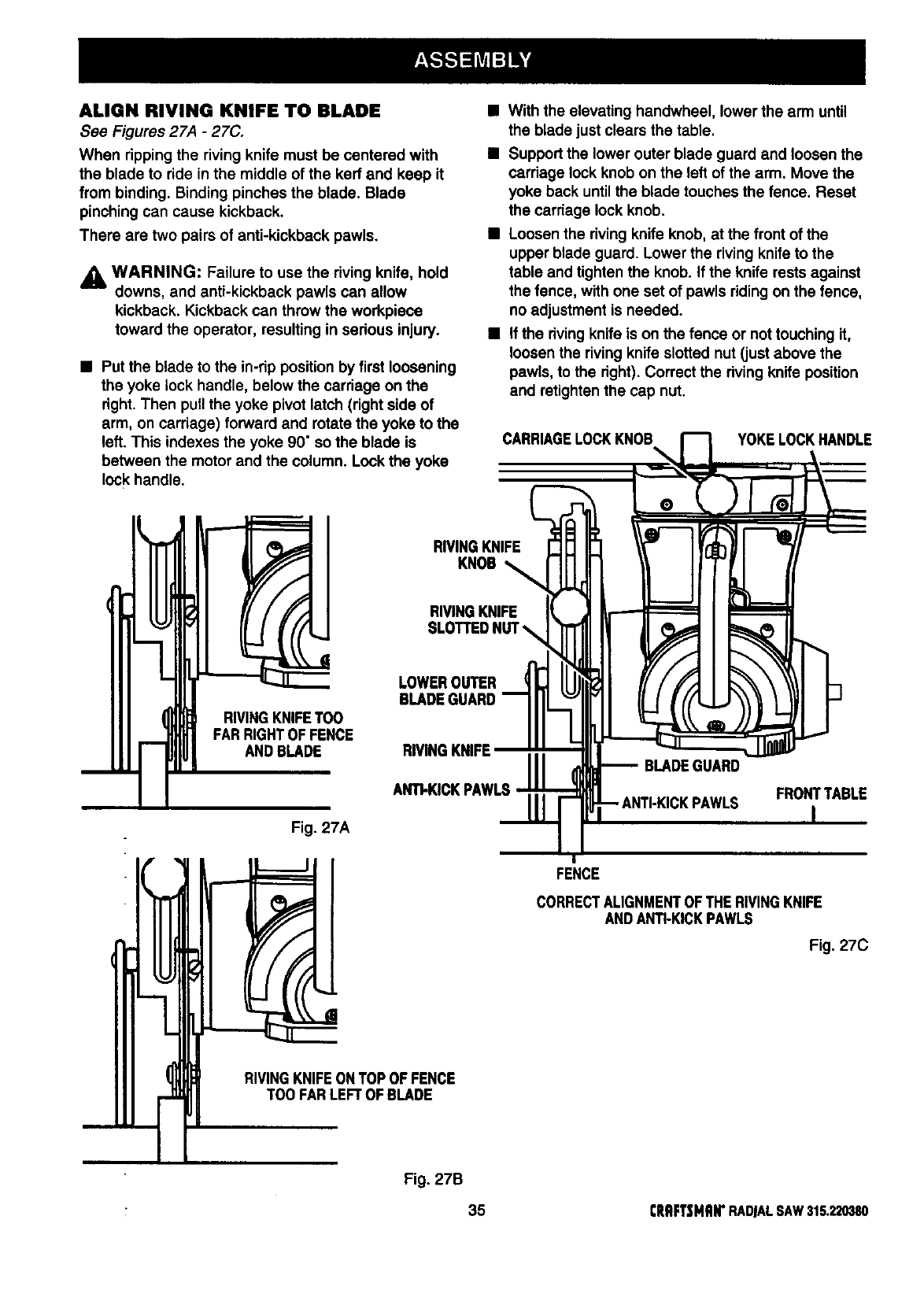
ALIGN RIVING KNIFE TO BLADE
See Figures 27A - 27C.
When ripping the riving knife must be centered with
the blade to ride in the middle of the kerr and keep it
from binding. Binding pinches the blade. Blade
pinching can cause kickback.
There are two pairs of anti-kickback pawls.
_ WARNING: Failure to use the riving knife, hold
downs, and anti-kickback pawls can allow
kickback. Kickback can throw the workpiece
toward the operator, resulting in serious injury.
• Put the blade to the in-rip position by first loosening
the yoke lock handle, below the carriage on the
right. Then pull the yoke pivot latch (right side of
arm, on carriage) forward and rotate the yoke to the
left. This indexes the yoke 90" so the blade is
between the motor and the column. Lock the yoke
lock handle.
• With the elevating handwheel, lower the arm until
the blade just clears the table.
• Support the lower outer blade guard and loosen the
carriage lock knob on the left of the arm. Move the
yoke back untilthe blade touches the fence. Reset
the carriage lock knob.
• Loosen the riving knife knob, at the front of the
upper blade guard. Lower the riving knife to the
table and tighten the knob. If the knife rests against
the fence, with one set of pawls riding on the fence,
no adjustment is needed.
• If the rivingknife is on the fence or not touching it,
loosen the riving knife slotted nut (just above the
pawls, to the right). Correct the riving knife position
and retighten the cap nut.
CARRIAGELOCKKNOB YOKELOCKHANDLE
f
!
RIVINGKNIFETOO
FAR RIGHTOFFENCE
AND BLADE
Fig. 27A
RIVINGKNIFE
KNOB
RIVINGKNIFE
LOWEROUTER
RIVINGKNIFE
ANTI-KICKPAWLS
RIVINGKNIFEONTOP OF FENCE
TOO FARLEFTOFBLADE
BLADEGUARD
FRONTTABLE
FENCE
CORRECTALIGNMENTOFTHERIVINGKNIFE
ANDANTI-KICKPAWLS
Fig. 27C
Fig. 27B
35 CRRFTSHRIrRADIALSAW315.220380


















